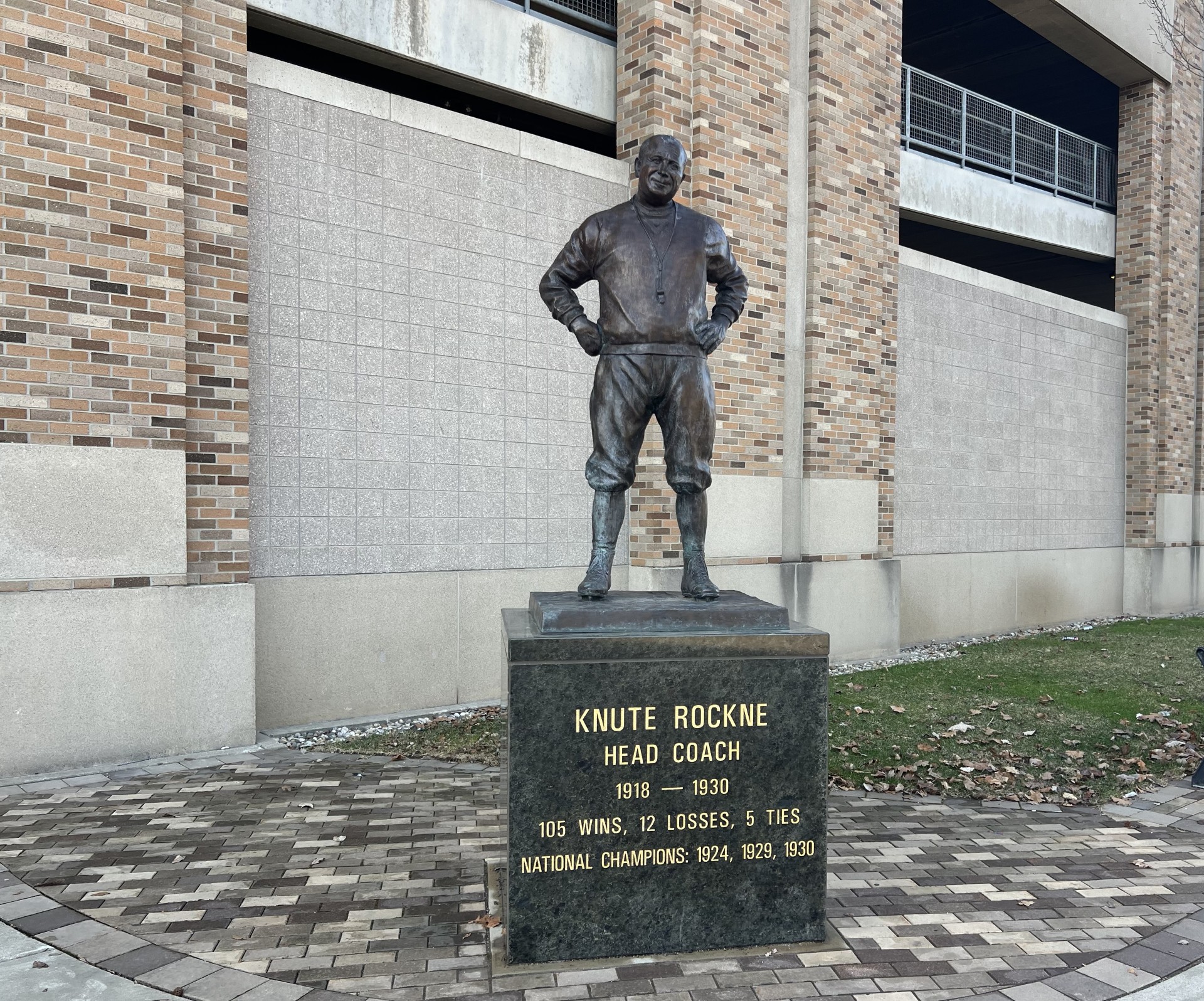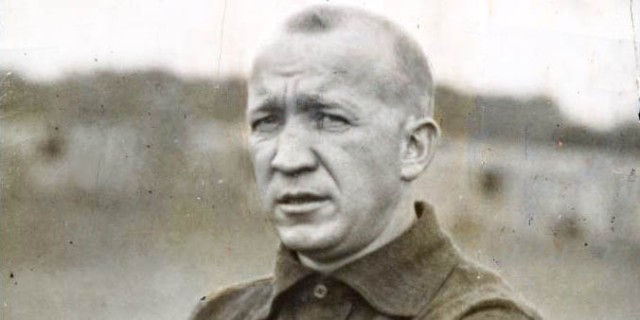Knute Rockne portrait, 1921. (Wikicommons)
Editor’s Note: March 31 marks the 94th anniversary of the tragic plane crash the took the life of the legendary Knute Rockne, here is a look at Rockne’s lasting impact, not just on the game of football but also on the field of aviation.
On the cold morning of March 31, 1931, in the Flint Hills of Kansas, Transcontinental and Western Air (TWA) Flight 599 crashed into a vast field of swaying prairie grass. All eight passengers, including legendary Notre Dame football coach Knute Rockne, were killed instantly. The tragedy sent shockwaves across the nation. At the time, Rockne’s popularity was said to rival that of Babe Ruth, transcending sports into the very fabric of American culture.
Rockne’s untimely death not only left a huge void in football world but also spurred critical changes in aviation safety.
The Making of a Football Icon
Born in Norway in 1888, Rockne immigrated to the United States as a child, growing up in a working-class neighborhood on the northwest side of Chicago. After high school, he worked for the post office for four years to save enough money to attend the University of Notre Dame.
At ND, he excelled as both a student and an athlete, starring in football and track. It was at Notre Dame in 1913 that Rockne and quarterback Gus Dorais revolutionized the sport by successfully implementing the forward pass in a stunning upset over Army, a strategic innovation that would forever change football.
After graduating, Rockne spent four years as an assistant coach under Jess Harper before taking over as head coach in 1918. Over the next 13 seasons, he guided Notre Dame to unprecedented success, compiling an extraordinary 105-12-5 record, the highest winning percentage (.881) in college football history. Under his leadership, Notre Dame won three national championships (1924, 1929, and 1930) and became a household name. He was the mastermind behind the legendary “Four Horsemen” backfield of 1924 and a pioneer in using media, including radio, to promote college football.
There are many tenants of the game today that Rockne can be credited with as a pioneer. Some include the development of the revolutionary at the time “Notre Dame box” offense, a precursor of many of the modern formation of today. He was also one of the first to use moving players and shifting formations pre-snap to confuse defenses, a staple of the modern game.
Rockne was also one of the first coaches to recognize the importance of physical conditioning, aerobic exercise and incorporating strategic rest periods into his practices. He also was one of the first adapters of using game film and statistical analysis.
Rockne’s football influence extended beyond coaching. He played a key role in standardizing the modern football’s shape, size, and weight, ensuring consistency across the game. His motivational prowess was legendary—his famous speech urging his team to “win one for the Gipper,” honoring the late George Gipp, remains one of the most iconic moments in sports history. His motivational skills were such that he was a popular motivational speaker for the business world and he was a pitchman for Studebaker automobiles.
As a promoter of the Notre Dame brand Rockne was superb and effective, in fact he can be credited with being a huge factor in the early growth of Notre Dame into the international educational powerhouse it is today. Coaches today know well, that their responsibilities go far beyond teaching blocking and tackling and Rockne was one of the first to take an active and effective role in promoting the attributes of the school his team represented.
The Tragic Flight and Its Lasting Impact
At the peak of his career in the early spring of 1931, Rockne embarked on what would be his final journey—a business trip to California, to consult on the Hollywood movie The Spirit of Notre Dame. The TWA flight carrying him was a Fokker F-10, an aircraft with a wooden-wing design susceptible to structural failure. Mid-flight, one of the wings separated from the fuselage, causing the plane to plunge into the Kansas prairie.
The world mourned.
Rockne’s funeral, held at the Basilica of the Sacred Heart at Notre Dame, was one of the most solemn and widely attended events in American sports history. Over 100,000 people flooded the streets of South Bend to pay their final respects, with most unable to get inside the overflowing church. His casket was carried through a sea of grieving fans, alumni, and players, all mourning the loss of a man who had become a national icon. The funeral was broadcast across the country on radio, allowing millions to share in the sorrow of his passing.
The grief extended beyond the football world—Rockne was posthumously knighted by the King of Norway, a rare honor that reflected his international influence. Newspapers across the country ran tributes, and President Herbert Hoover himself expressed his condolences, calling Rockne’s death a national tragedy.
Beyond the immense grief, Rockne’s death had far-reaching consequences for the aviation industry. The crash investigation exposed the dangers of wooden-wing aircraft, prompting the immediate grounding of all Fokker F-10 planes and accelerating the shift toward all-metal aircraft, a standard that significantly improved flight safety. The tragedy also led to stricter airline regulations, improved maintenance protocols, and the establishment of better meteorological forecasting for flights. These reforms played a role in the eventual creation of the Civil Aeronautics Authority in 1938, the predecessor to today’s Federal Aviation Administration (FAA), ensuring safer skies for future travelers.
A Legacy That Endures
Knute Rockne’s influence continues to shape both college football and aviation safety. His strategic innovations, coaching philosophy, and promotional genius laid the foundation for modern football, while his tragic passing served as a catalyst for critical advancements in aviation safety.
Notre Dame, became an internationally renowned institution. A good measure of the reason for that is the impact of its storied football tradition which was built through Rockne’s vision and leadership. To this day, his name remains synonymous with excellence, innovation, and the relentless pursuit of greatness. Though he lived a short 43 years, his legacy lives on—not only in the football stadiums and playbooks of today but also in the skies above, made safer by the lessons learned from that fateful day in 1931.
For more on Rockne see: Knute Rockne’s Immortal Truth and Unforgetting Knute Rockne

Rockne statute on Notre Dame campus. It stands adjacent to the Rockne Gate of the Stadium, and opposite the Hesburgh Library a/k/a, “Touchdown Jesus”. (Photo Phil Houk)

